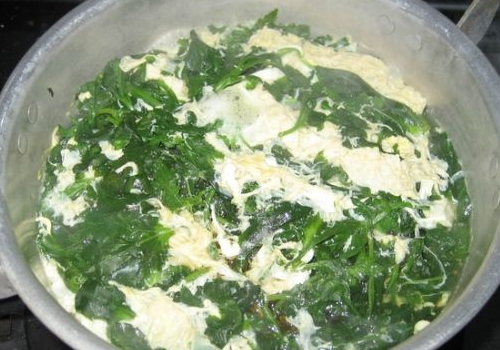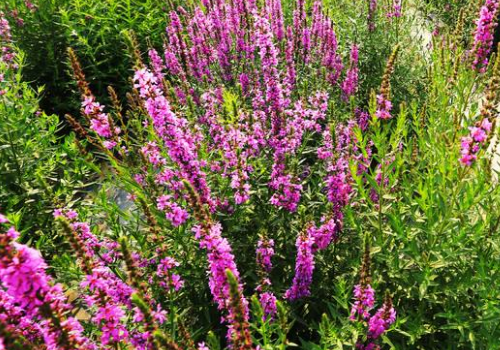When and how to plant chrysanthemum brains
Chrysanthemum brain, which can be planted in many areas have species. When do you plant chrysanthemums? How to grow?
When did the brain grow:
Because chrysanthemum brain grows appropriate temperature 12-20℃. Sowing time is best in early February to early March. Chrysanthemum is easy to grow. Sporadic planting can be carried out by separate propagation, sheet planting can be carried out by direct seeding or seedling transplantation, and can also be cultivated for many years. Take perennial cultivation, 3- 4 years after the plant senescence, need to renew.

How to grow your brain:
Chrysanthemum brain also known as chrysanthemum leaves, roadside yellow, wild chrysanthemum, perennial roots for herbs. It is rich in nutrients, with cooling, antipyretic, appetizing, lowering blood pressure and other effects. The optimum temperature for growth is 12-20℃. There are two main varieties in northern Jiangsu, one is small leaf, the other is big leaf, and large leaf chrysanthemum brain is used in production.
1. Land preparation:
It is better to choose fertile sandy loam. Before sowing or transplanting, apply sufficient base fertilizer, carefully prepare the soil, and make a bed with a width of 1.2--1.5m, and a height of about 20--30cm.
2. Breeding methods:
Chrysanthemum can be used seed propagation, plant propagation and cuttage propagation. Cuttage propagation is good, its method is: in May-June, select about 5--6cm long tender shoots, pick 2--3 leaves of stem, cut tender shoots in seedbed, depth is 1/3 of tender shoot length, keep soil moist after insertion, and shade with sunshade net, survive for about half a month. The planting density is 30cm--30cm.
3. Field management:
First of all, we should apply enough base fertilizer and apply "long brain fertilizer" frequently. About 2500kg decomposed organic fertilizer was applied per 667 square meters. When planting, apply a thin human and animal manure in combination with watering the roots, about 1500kg per 667 square meters, so as to facilitate survival. Every harvest time combined with watering and topdressing once, every 667 square meters each time topdressing decomposed human and animal manure about 2000kg.
4. Harvesting and seed retention:
Protected cultivation can be harvested earlier in March, open field cultivation generally in April-May harvest. Harvest peak period for May-August, harvest once every half month until October-November bud flowering. The more harvesting times, the more vigorous branches, frequent picking can also avoid aphid harm. Harvesting criteria to tender stems, that is, broken by hand for the degree, tied into small bundles listed.
Well, the introduction of chrysanthemum brain planting time and technology is here, I hope to help everyone.
How to harvest chrysanthemum brain when?
Chrysanthemum brain, many people like to eat, eat a certain amount of good for the body. When will the chrysanthemum be harvested? How?
When to harvest chrysanthemums:
Protected cultivation can be harvested earlier in March, open field cultivation generally in April-May harvest. Harvest peak period for May-August, harvest once every half month until October-November bud flowering. The more harvesting times, the more vigorous branches, frequent picking can also avoid aphid harm. Harvesting criteria to tender stems, that is, broken by hand for the degree, tied into small bundles listed. Continuous planting can harvest 150- 200kg per 667 square meters, with an annual output of 4500- 5000kg. Early harvest with hand pick or cut with scissors, later plants grow up, can be used sickle cut. When picking, pay attention to the height of stubble, in order to maintain sufficient bud number, which is conducive to maintaining high yield in the later stage. The stubble is 3--5cm in spring, 6--10cm in autumn and winter, 4--5 times in spring and summer, and 3--4 times in autumn and winter.
How to remove the brain:
Hand pinch not to move the stems and yellow leaves can be fried can also do soup.
Chrysanthemum brain is a relative plant of chrysanthemum indicum, which belongs to compositae. There are two kinds of chrysanthemum brain, namely, chrysanthemum brain with small leaves and chrysanthemum brain with large leaves. The quality of chrysanthemum brain with large leaves is better. Chrysanthemum brain is the most common dishes on the folk table, especially chrysanthemum brain duck egg soup is the best summer heatstroke. Chrysanthemum brain is rich in nutrition, is a very promising wild vegetables. Chrysanthemum brain in addition to protein, fat, cellulose and vitamins and other nutrients, but also contains flavonoids and volatile oil, has a special aroma, cool food Qingkou. Can be fried, cold or boiled soup.
Well, about chrysanthemum brain harvest time introduced here, friends all understand it.
Chrysanthemum brain planting method big secret
Good friends, do not know if you have wood someone is Jiangsu, Hunan or Guizhou, southern friends may have eaten or heard of most chrysanthemum brain bar! Chrysanthemum brain is also called chrysanthemum leaf, and some people call it chrysanthemum vegetable, chrysanthemum Lang, etc. Why is it called so? That's because it looks a bit like wild chrysanthemum. Its tender stems and leaves are edible. Chrysanthemum brain is a dish that people often eat in the south. Chrysanthemum brain egg soup made with it is especially suitable for drinking in summer. It can prevent heatstroke, and also has the effect of clearing away heat and detoxifying, regulating appetite, and lowering blood pressure for older people. Therefore, its development prospects are particularly broad.
Nowadays, artificial cultivation in East China, Central China, South China and North China is expanding year by year, especially in Nanjing, where the cultivation history is long and the area is large. It is a traditional wild vegetable with special characteristics in Nanjing area. Chrysanthemum brain adaptability is strong, artificial cultivation is easy, diseases and insect pests are few, as a pollution-free green leaf vegetable, can adjust the market color varieties. The development of chrysanthemum brain production will have greater market potential.
Cultivation techniques:
(1)reproductive mode
① Seed reproduction
Seed propagation seedling quantity is large, large-area production generally adopts this method. Deep ploughing before sowing, applying fully decomposed organic fertilizer, hoeing fine and leveling, making flat beds. When sowing, mix the seeds with a small amount of fine soil and sow or drill them. About 0.25 kg of seed is used per 667 m2. After sowing, cover a layer of fine soil, then cover plastic film, keep warm and keep moisture, promote seedling emergence. When seedlings grow to 2-3 true leaves, plant spacing should be kept at 10 cm. The seedlings can be transplanted into the field as seedlings. If seedling transplanting is carried out, when the seedling age is 30 days (with 2-3 true leaves), 3-5 plants per nest are transplanted to the cultivation site according to the nest spacing of 20 cm square. The sowing season is from February to early March in southern China and early April in northern China.
② Plant division propagation
The overwintering plants are dug out in spring, divided into several plants, planted separately, watered in time after planting to promote survival. This method plant growth fast, simple and easy, but seedling quantity is small, generally not used in production.
③ Cutting propagation
Cuttage propagation can be carried out in the growing season, but the highest survival rate of cuttage is in May and June. Take chrysanthemum brain tender tip (about 5-6 cm long), pick 2-3 leaves at the base, insert into the seedbed, and bury 1/2. Keep the soil moist after planting. Generally half a month can survive, and then transplanted in the field.
(2)field management
Chrysanthemum brain cultivation management is relatively simple. Cultivation base manure can generally be applied by 2000 kg of decomposed manure per 667 square meters. Before the first harvest, light human and animal manure water should be applied 2-3 times, once every 10-15 days, about 1500 kg per 667 square meters each time. After that, topdressing is applied once every harvest, and 2000 kg of light human and animal manure or 10 kg of urea is applied every 667 square meters. If perennial cultivation is carried out, after the stems and leaves of the ground are completely dried in winter, the stems are cut off, and a layer of decomposed organic fertilizer is spread on the ground surface to keep warm for winter.
Proper watering during the growth period, combined with fertilizer irrigation once permeable, to keep the field moist, pay attention to timely drainage after rain. Weeds in the field should be pulled out in time, and shallow cultivation should be carried out when the soil is hardened.
(3)pest control
Chrysanthemum brain disease resistance is strong, diseases and insect pests rarely occur. Leaf spot, powdery mildew, dodder and aphids also occur when cultivated in large areas.
Leaf spot disease, the affected leaves present dark brown spots, gradually enlarged, leading to early leaf shedding, can be controlled by Bordeaux mixture.
Powdery mildew, white powdery spots on the affected leaves, gradually enlarged and connected into a piece, leaves deformed, plants stopped growing. Available triadimefon wettable powder control.
Chrysanthemum perennial cultivation occasionally dodder parasitic damage, microbial herbicide Lubao No. 1 water solution can be used to control.
(4)recovery
Usually in April-May, when the plant height of 10-15 cm began to harvest, until September-October bud flowering. Protected cultivation can be advanced to March harvest. The standard for harvesting tender shoots is to break off by hand, about 10-15 cm long. When harvesting, pay attention to 3-5 cm stubble in spring and 6-10 cm stubble in autumn to maintain sufficient bud number.
Requirements for environmental conditions:
Chrysanthemum brain cold, afraid of heat. Seeds germinate above 4℃, the optimum germination temperature is 15-20℃, the optimum temperature for seedling growth is 12-20℃, the growing plants can also grow in high temperature season, but the quality of edible parts is poor.
Chrysanthemum is a short-day plant, long day and strong light conditions are conducive to vegetative growth, short day is conducive to flower bud formation, bolting and flowering.
Chrysanthemum brain water requirements are more strict, growth period must maintain adequate water supply, but can not ponding.
Chrysanthemum brain to soil adaptability, barren resistance, do not choose soil, but in good drainage, loose fertile soil cultivation, high yield, good quality.
Chrysanthemum brains can be divided into two types according to the size of the leaves. One type is large-leaf chrysanthemum brains, and the other type is, of course, lobular chrysanthemum brains. The leaves of Dayeju brain are relatively large, the edges of the leaves are slightly lobed, and the apex is obtuse, not only good quality, but also high yield. So most of the cultivation is big leaf chrysanthemum brain. Of course, the small leaves of chrysanthemum are smaller, the edges of the leaves are deeply divided, and the petioles often appear a lighter purple. Because the quality is not as good as big leaf chrysanthemum brain, so the yield is also relatively low. After listening to Xiao Bian, do you feel that chrysanthemum brain has a lot of benefits? Then plant it yourself and experience its magical effects!
- Prev

Can I eat lemon mint planting method?
Lemon mint, this is a lot of people are not strange, super many people like, so this lemon mint planting method is like this? Can you eat: lemon mint planting method: 1. Sowing time: planted in autumn and winter in the Yangtze River Basin in southern China, that is, from late October to late November.
- Next

Introduction to the method of flowering and planting of Qianqu
Qianchi is known to few people, but many people have seen it, so when will it blossom? Introduction of planting methods? When does Qianchi bloom: the flowers are aggregated, the pedicels are relatively short, and the small flowers gather together, which looks like a big spike.
Related
- Fuxing push coffee new agricultural production and marketing class: lack of small-scale processing plants
- Jujube rice field leisure farm deep ploughing Yilan for five years to create a space for organic food and play
- Nongyu Farm-A trial of organic papaya for brave women with advanced technology
- Four points for attention in the prevention and control of diseases and insect pests of edible fungi
- How to add nutrient solution to Edible Fungi
- Is there any good way to control edible fungus mites?
- Open Inoculation Technology of Edible Fungi
- Is there any clever way to use fertilizer for edible fungus in winter?
- What agents are used to kill the pathogens of edible fungi in the mushroom shed?
- Rapid drying of Edible Fungi

